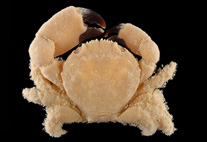Abstract
In the last three decades some faunal surveys of Drosophilidae have been done in several environments in the Neotropical region, especially in Brazil. But approximately 30 to 50% of the drosophilids in Brazil have not yet been described, and the degradation of some biomes causes a profound loss of species diversity, as well as the loss of information about the present structureof their communities. This is the situation with the pampas biome, which covers southernmost Brazil, all of Uruguay, and the central region of eastern Argentina. For the present study, seasonal collections were made in a natural area of pampas within the limits of the municipality of Bossoroca in the state of Rio Grande do Sul, Brazil (28°45’01”S 54°56’55”W), from April 2011 to April 2012. A total of 7,164 drosophilids of 51 species were collected, comprising 36 species belonging to Drosophila Fallén, ten of Rhinoleucophenga Hendel, two of Amiota Loew, two of Zygothrica Wiedemann and one of Zaprionus Coquillett. Some species were recorded for the first time in pampas: Drosophila briegeri Pavan & Breuer, D. fuscolineata Duda, Rhinoleucophenga obesa (Loew), R. punctulata Duda, R. subradiata Duda and Zygothrica orbitalis (Sturtevant). Furthermore, three new species of genus Rhinoleucophenga were described: R. pampeana sp. nov., R. missionera sp. nov. and R. sulina sp. nov. A dichotomous key is given for the Rhinoleucophenga species recorded in pampas. An intensive literature search is reviewed of drosophilid species recorded in pampas of Brazil, Uruguay and Argentina, including taxonomic, genetic, evolutionary, and ecological studies. Despite Brazilian pampas being the richest when compared with Uruguay and Argentina, the three countries presented the same problem: huge areas with a barely surveyed Drosophilidae fauna. The combination of this information and the knowledge of the current state of preservation of pampas stress the necessity and importance of creating new conservation areas to preserve the natural biodiversity of pampas.

